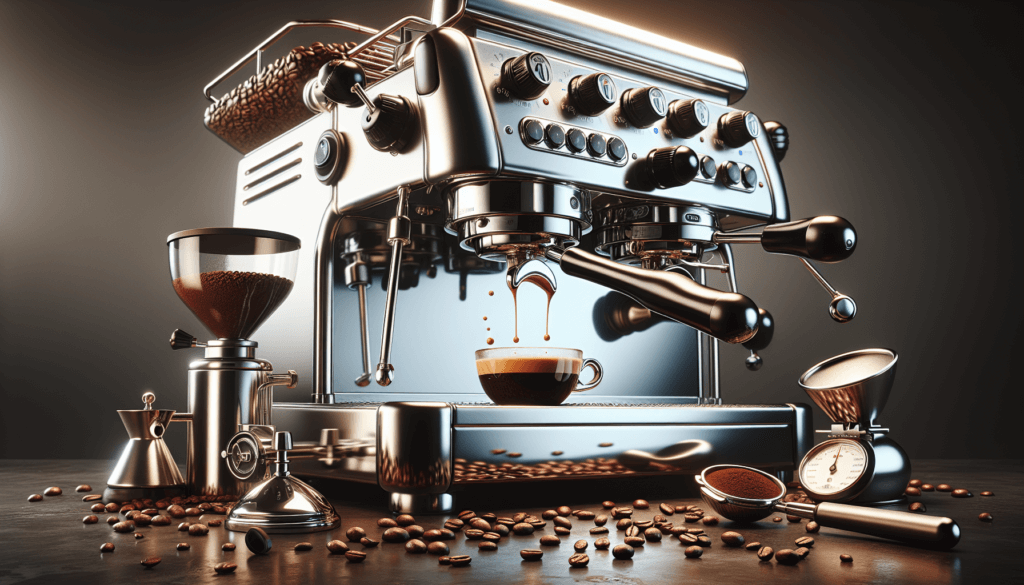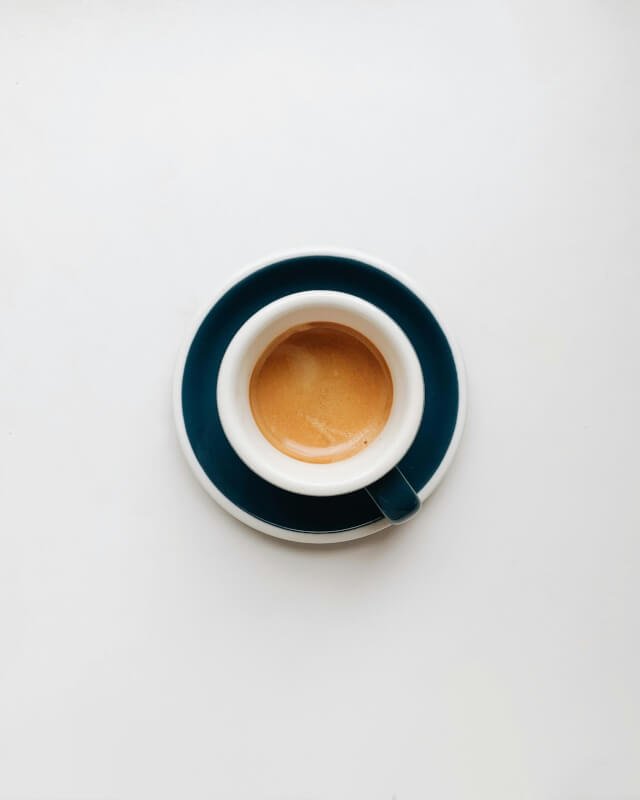Are you passionate about coffee and want to achieve the perfect espresso extraction every time? Look no further! In this comprehensive guide, you will discover everything you need to know about espresso extraction and dialing in. From understanding the variables that influence extraction to mastering the art of adjusting grind size and extraction time, this guide will provide you with the knowledge and techniques to brew a delicious cup of espresso that suits your taste preferences. Get ready to elevate your coffee experience with this ultimate guide.
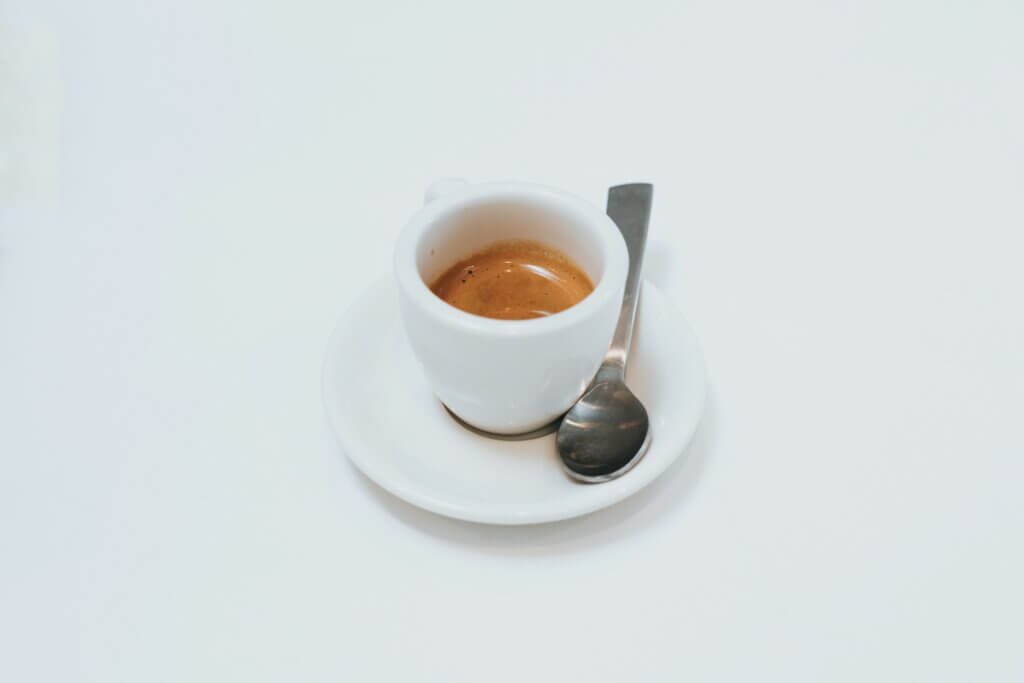
Understanding Espresso Extraction
The Basics of Espresso Extraction
When it comes to making a delicious cup of espresso, understanding the process of extraction is essential. Extraction refers to the process of dissolving and extracting the desired soluble compounds from coffee grounds using hot water. It is during this process that the flavors, aromas, and characteristics of your espresso are brought to life. The goal is to achieve a balanced and flavorful extraction that highlights the unique qualities of the coffee beans.
The Importance of Coffee-to-Water Ratio
One crucial factor that influences the extraction of coffee is the coffee-to-water ratio. This ratio refers to the amount of coffee used in comparison to the amount of water used for extraction. Finding the right balance between the two is essential to achieve optimal extraction. Too much coffee and your espresso may be overpowering and bitter, while too little coffee can result in a weak and under-extracted brew.
Grind Size and Its Impact on Extraction
The size of coffee grounds plays a significant role in controlling the extraction process. Different brewing methods require different grind sizes, and for espresso, a fine grind is typically preferred. The surface area of the coffee particles determines the rate at which the water can extract the desired flavors. A finer grind size increases the surface area, allowing for a quicker extraction, while a coarser grind leads to a slower extraction. It’s important to find the right grind size that allows for balanced flavors and an appropriate brew time.
The Role of Brew Time in Extraction
Brew time refers to the duration for which water is in contact with the coffee grounds during the extraction process. It is essential to control brew time to achieve a properly extracted espresso. Too short of a brew time can result in an under-extracted and weak coffee, while an extended brew time may lead to over-extraction, resulting in a bitter and unpleasant flavor. Optimizing brew time is crucial in achieving a well-balanced and flavorful cup of espresso.
The Science Behind Under and Over Extraction
Under and over extraction are terms used to describe the imbalances in the extraction process. Under-extraction occurs when insufficient soluble compounds are extracted from the coffee grounds, resulting in a sour and weak espresso. On the other hand, over-extraction happens when too many soluble compounds are extracted, leading to a bitter and astringent taste. Achieving the perfect balance between the two is important to produce an espresso with delightful flavors.
The Dialing In Process
What is Dialing In?
Dialing in refers to the process of fine-tuning and adjusting your espresso brewing parameters to achieve the desired flavor profile. It involves making gradual changes to the coffee-to-water ratio, grind size, brew time, and other variables to find the optimal combination that brings out the best flavors of a particular coffee. Dialing in is a crucial step in achieving consistency and quality in your espresso brewing.
Setting Up Your Espresso Machine
Before diving into the dialing in process, it’s important to ensure that your espresso machine is properly set up. This starts with calibrating the machine to the correct pressure and temperature settings. The pressure determines the rate at which water is forced through the coffee grounds, while the temperature affects the extraction process. Additionally, keeping your equipment clean and well-maintained is vital for consistent and flavorful extraction.
Initial Brewing Parameters
To get started with dialing in, it’s necessary to establish some initial brewing parameters. This includes determining the coffee-to-water ratio, selecting a starting grind size, and setting a brew time. These initial settings will serve as a baseline for further adjustments. It’s important to note down the parameters used for each brew, as well as the tasting notes, to help guide your adjustments and track your progress.
Making Adjustments based on Taste
After the initial brewing, it’s time to taste the espresso and assess its flavor. Pay attention to the acidity, sweetness, bitterness, and overall balance. If the espresso is too sour or weak, it may be under-extracted, and adjustments such as grinding finer or increasing the brew time might be necessary. Conversely, if the espresso tastes bitter or astringent, it could be over-extracted, indicating the need to adjust the grind size coarser or decrease the brew time. The key is to make small and controlled changes to achieve the desired flavor profile.
Troubleshooting Common Extraction Issues
During the dialing in process, you may encounter certain extraction issues that need to be addressed. Bitter or sour espresso is a common problem that can be fixed by adjusting the grind size and brew time. Channeling, where water finds paths of least resistance through the coffee puck, resulting in uneven extraction, can be solved by ensuring proper distribution and leveling of coffee grounds. Inconsistent extraction yield may be due to variations in tamping pressure or the distribution of the coffee bed. Identifying and correcting these issues will contribute to a more consistent and flavorful extraction.
The Importance of Coffee-to-Water Ratio
What is Coffee-to-Water Ratio?
The coffee-to-water ratio refers to the proportion of coffee grounds to water used in the brewing process. This ratio is crucial in determining the strength and flavor of your espresso. It is usually expressed in grams or ounces, indicating the amount of coffee needed per unit of water. Finding the right balance between coffee and water is essential to achieving a well-balanced extraction.
The Optimal Coffee-to-Water Ratio for Espresso
A common rule of thumb for espresso is a ratio of 1:2, where one part coffee is paired with two parts water. This means that for every gram or ounce of coffee used, two grams or ounces of water should be added. However, it’s important to consider personal preferences and the particular coffee being used. Some may prefer a stronger cup and opt for a higher coffee-to-water ratio, while others may prefer a milder taste and choose a lower ratio. Experimentation and tasting will help determine the optimal ratio for your palate.
How to Measure Coffee and Water
Accurately measuring the coffee and water is essential for consistent results. Using a kitchen scale to weigh the coffee and water ensures precision. For the coffee, simply place the desired amount of coffee grounds onto the scale. When measuring the water, it’s important to account for any water absorption by the coffee grounds. As a general guideline, measure the water after brewing rather than before, to ensure an accurate coffee-to-water ratio.
The Impact of Varying Coffee-to-Water Ratios
Adjusting the coffee-to-water ratio can have a significant impact on the flavor of your espresso. A higher ratio will result in a stronger and more intense cup, while a lower ratio will produce a milder and less concentrated taste. It’s important to note that changing the ratio may require corresponding adjustments in grind size and brew time to maintain a balanced extraction. Experimentation and tasting will help in finding the ideal coffee-to-water ratio that suits your taste preferences.
Grind Size and Its Impact on Extraction
Understanding Grind Size
Grind size refers to the particle size of the coffee grounds. It determines the rate at which water can extract the flavors from the coffee. For espresso, a fine grind is typically preferred, as it provides a larger surface area for extraction within the short brewing time. Coarse grinds are more suitable for slower extraction methods, such as French press. Understanding and adjusting the grind size is crucial in achieving the desired extraction and flavor in your espresso.
Finding the Right Grind Size for Espresso
The right grind size for espresso depends on various factors, including the coffee beans used, the espresso machine, and personal taste preferences. It’s important to experiment with different grind sizes to find the sweet spot that allows for balanced flavors and optimal extraction. If the espresso tastes too sour or weak, it may indicate that the grind size is too coarse. On the other hand, if the espresso is bitter or astringent, it suggests that the grind size is too fine.
The Relationship Between Grind Size and Extraction
Grind size directly affects the rate at which the flavors are extracted from coffee grounds. Finer grinds yield a faster extraction, as the increased surface area allows for quicker dissolution of flavors. Coarser grinds, on the other hand, lead to a slower extraction due to the decreased surface area. Achieving the right balance is crucial in controlling the extraction process and obtaining the desired flavor profile. Fine-tuning the grind size in conjunction with other variables will result in a well-extracted and flavorful espresso.
Making Adjustments to Dial In Grind Size
During the dialing in process, it’s common to make adjustments to the grind size to achieve the desired extraction. If the espresso tastes under-extracted or weak, it may be necessary to grind the coffee finer. On the other hand, if the espresso is over-extracted or bitter, a coarser grind size should be considered. It’s important to make small and incremental changes to the grind size, allowing enough time for the adjustments to take effect before tasting. Patience and experimentation are key in finding the optimal grind size for your espresso.
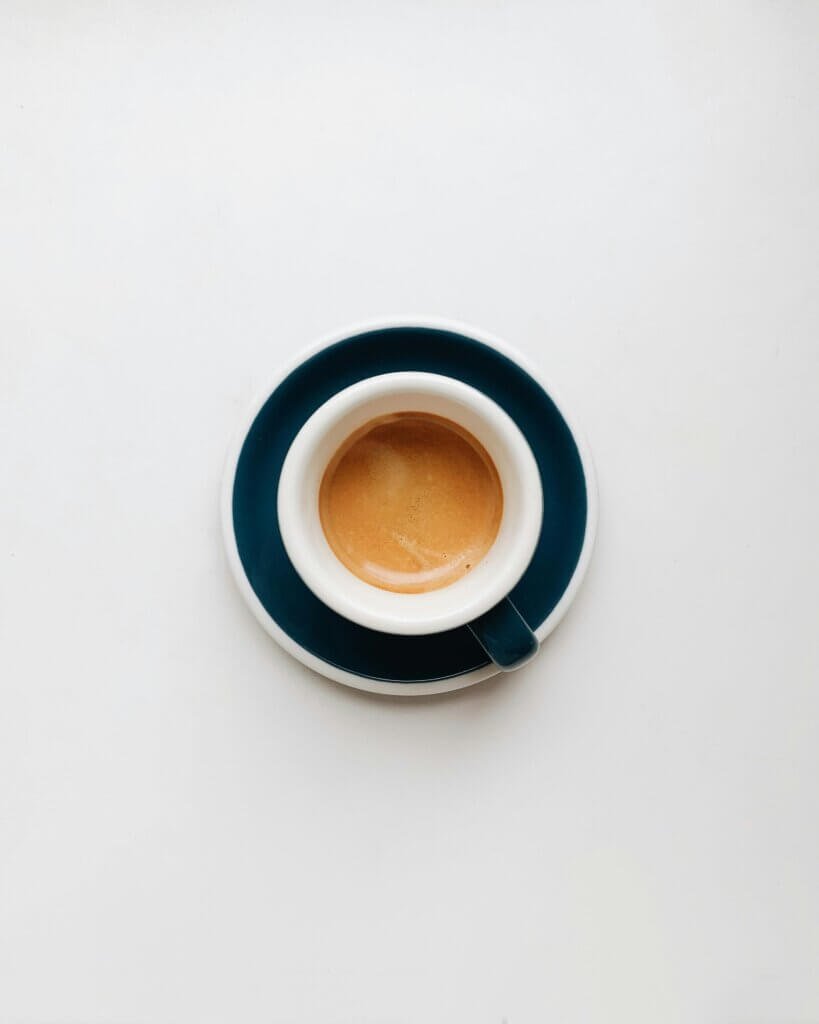
The Role of Brew Time in Extraction
Understanding Brew Time
Brew time refers to the duration for which water is in contact with the coffee grounds during the extraction process. The timing begins from the moment water first comes into contact with the grounds until the extraction is complete. In espresso brewing, the brew time is typically short, ranging from 20 to 30 seconds. Monitoring and controlling the brew time is important in achieving a properly extracted espresso.
The Ideal Brew Time for Espresso Extraction
The ideal brew time for espresso extraction falls within the range of 20 to 30 seconds. This timing allows for the extraction of desirable flavors while minimizing the extraction of undesirable compounds that contribute to bitterness. However, it’s important to note that brew time alone does not determine the quality of extraction. It should be considered in conjunction with other variables, such as grind size and coffee-to-water ratio, to achieve a well-balanced and flavorful espresso.
Adjusting Brew Time to Optimize Extraction
To optimize extraction, it may be necessary to make adjustments to the brew time. If the espresso tastes sour or weak, it could be an indication of under-extraction. In this case, a longer brew time might be needed to fully extract the flavors. On the other hand, if the espresso tastes bitter or astringent, it suggests over-extraction, and a shorter brew time may be necessary. It’s important to make gradual changes to the brew time, as sudden adjustments can result in inconsistent extraction. Tasting and adjusting accordingly will help achieve a perfectly balanced brew.
Factors Affecting Brew Time
Several factors can affect the brew time in espresso extraction. The coffee-to-water ratio, grind size, and tamping pressure all contribute to the flow rate of water through the coffee grounds. A finer grind size and a higher tamping pressure can slow down the flow, resulting in a longer brew time. Conversely, a coarser grind size and a lighter tamp can lead to a faster extraction. It’s important to find the right combination of variables to achieve optimal brew time and extraction.
The Science Behind Under and Over Extraction
Defining Under and Over Extraction
Under and over extraction are two terms used to describe imbalances in the flavor extraction process. Under-extraction occurs when the coffee grounds are not fully utilized, resulting in a sour and weak espresso. This happens when the water hasn’t had enough time to extract the desired flavors and characteristics from the coffee. Over-extraction, on the other hand, refers to the extraction of too many undesirable compounds, leading to a bitter and astringent taste.
Identifying Under and Over Extraction in Espresso
Identifying under and over extraction can be done by carefully tasting and evaluating the espresso. Under-extracted espresso typically tastes sour, lacking in body and sweetness. It may also have a thin and watery mouthfeel. Over-extracted espresso, on the other hand, tends to taste excessively bitter and astringent, with a heavy and dry mouthfeel. It’s important to note and adjust brewing parameters accordingly to achieve a well-balanced extraction.
Causes and Effects of Under and Over Extraction
Under and over extraction can be caused by various factors, including improper grind size, insufficient or excessive brew time, and inconsistent tamping. Using a grind size that is too coarse or a short brew time can result in under-extraction. Conversely, using a grind size that is too fine or an extended brew time can lead to over-extraction. It’s important to find the right balance to extract the desired flavors while avoiding the extraction of undesirable compounds.
Balancing Extraction for Optimal Flavor
Finding the balance between under and over extraction is crucial for achieving the optimal flavor in your espresso. Making small and controlled adjustments to variables such as grind size, brew time, and coffee-to-water ratio will help in achieving this balance. Tasting and assessing the flavors throughout the dialing in process will guide you in fine-tuning your brewing parameters. With practice and experimentation, you’ll be able to consistently produce delicious and well-extracted espressos.
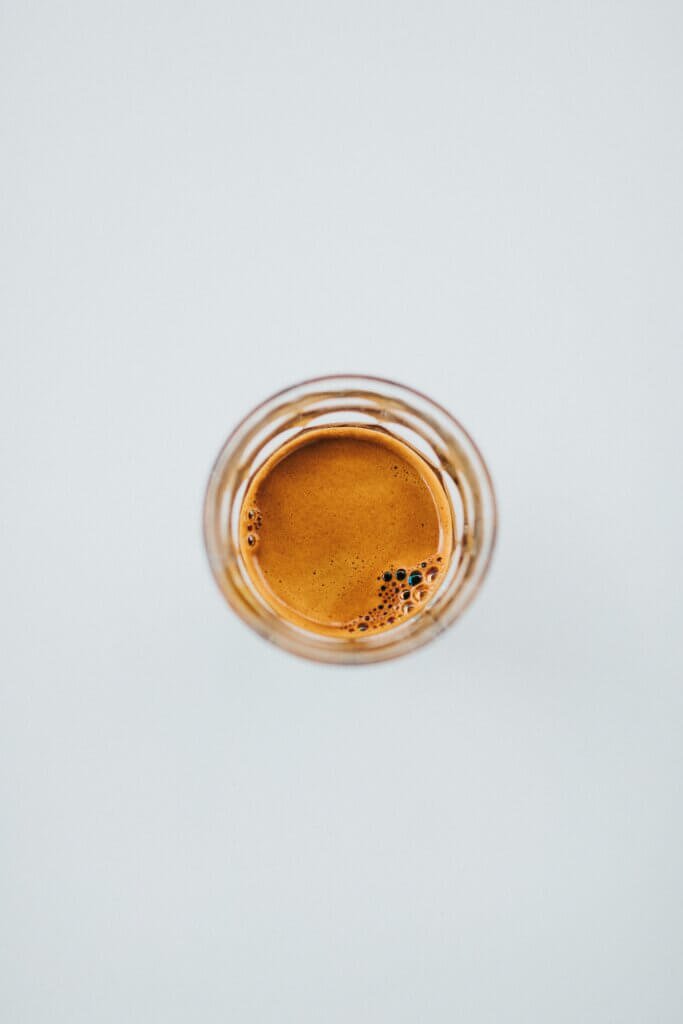
What is Dialing In?
An Overview of the Dialing In Process
Dialing in is the process of fine-tuning and adjusting your espresso brewing parameters to achieve the desired flavor profile. It involves making gradual changes to variables such as grind size, brew time, and coffee-to-water ratio to achieve the best extraction and balance of flavors. The goal is to consistently produce a flavorful and well-balanced espresso.
The Importance of Dialing In for Consistency
Consistency is key in the world of espresso brewing, and dialing in plays a vital role in achieving it. By establishing a consistent and repeatable brewing process, you can consistently produce coffee of high quality. Dialing in allows you to identify the optimal brewing parameters for each particular coffee and replicate those parameters consistently in future brews. This ensures that each cup of espresso is brewed to its full potential, providing a consistent and enjoyable experience for you and your customers.
The Relationship Between Extraction and Dialing In
Dialing in is directly linked to the extraction process. By making adjustments to variables such as grind size, brew time, and coffee-to-water ratio, you are essentially fine-tuning the extraction to achieve the desired flavors. The dialing in process allows you to find the perfect balance that brings out the unique characteristics of each coffee while avoiding under or over extraction. Through experimentation and tasting, you’ll become more adept at dialing in and producing exceptional espresso.
Recording and Fine-Tuning Brewing Parameters
To aid in the dialing in process, it’s crucial to record and keep track of your brewing parameters. This includes details such as the coffee-to-water ratio, grind size, brew time, and any additional notes on taste and quality. By recording these parameters, you can easily reference them for future brews and make minor adjustments if needed. Over time, you’ll develop a better understanding of the relationship between different variables and fine-tune your brewing parameters to consistently produce outstanding espresso.
Setting Up Your Espresso Machine
Calibrating Your Machine
Before diving into the dialing in process, it’s important to calibrate and set up your espresso machine correctly. This includes adjusting the temperature and pressure settings to ensure optimal extraction. Calibration ensures that your machine is functioning at its best and can deliver consistent and reliable results. Consult your machine’s manual or seek guidance from a professional if you’re unsure of how to calibrate your specific espresso machine.
Understanding Pressure and Temperature
Pressure and temperature are critical factors in espresso extraction. High pressure is necessary to force the water through the coffee grounds, ensuring a proper and complete extraction. The ideal pressure for espresso extraction is typically around 9 bars. Additionally, temperature plays a vital role in flavor extraction. The water temperature should be within the range of 195 to 205 degrees Fahrenheit (90 to 96 degrees Celsius) to extract optimum flavors.
Importance of Clean Equipment
Cleanliness is essential in maintaining the quality of your espresso. Leftover coffee residue and oils can impact the taste of your brew and even lead to clogs in your machine. Regularly cleaning your espresso machine, including the portafilter, shower screen, and group head, is crucial for optimal extraction and preventing any flavor contamination. Follow the manufacturer’s guidelines for cleaning and maintenance to ensure consistent and flavorful espresso.
Preparing Your Grinder and Portafilter
Your grinder and portafilter also require careful attention before brewing espresso. Ensure that your grinder is clean and properly adjusted to achieve the desired grind size. A well-maintained grinder will provide consistent particle size distribution, resulting in a more even extraction. Additionally, the portafilter should be clean and dry, free from any coffee residues or stale grounds. Proper preparation of both the grinder and portafilter sets the foundation for a successful dialing in process.
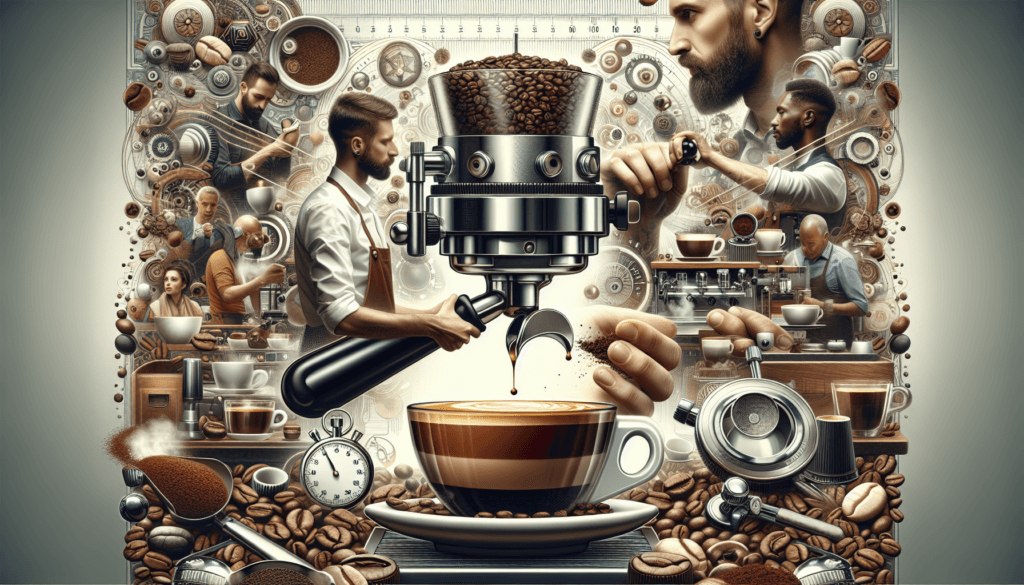
Initial Brewing Parameters
Setting Up the Coffee-to-Water Ratio
To kickstart the dialing in process, establish an initial coffee-to-water ratio for your espresso brewing. As mentioned earlier, a common starting point is a ratio of 1:2, with one part coffee to two parts water. However, keep in mind that personal preferences and the characteristics of the coffee beans may require adjustments to this ratio. The initial ratio serves as a baseline, allowing you to assess the flavors and make subsequent adjustments.
Choosing the Starting Grind Size
Selecting the starting grind size is another crucial step in the dialing in process. A recommended starting point is a fine grind size, which is typically ideal for espresso brewing. However, specific beans and coffee blends may require slight modifications. Aim for a grind size that allows for balanced flavors while achieving a 20 to 30-second brew time. Remember to make small adjustments from your initial grind size as you progress through the dialing in process.
Determining the Brew Time
During the initial brewing, pay close attention to the brew time. This is the period in which water is in contact with the coffee grounds, extracting the flavors. Ideally, the brew time for espresso falls between 20 to 30 seconds. Take note of the exact time to assess the extraction and taste the resulting espresso. This initial brew time will act as a guide for making adjustments later in the dialing in process.
Taking Note of Tasting Notes
After each initial brewing, take the time to evaluate and record your tasting notes. Focus on the acidity, sweetness, bitterness, and overall balance of the espresso. Note any specific flavors or characteristics you detect. These tasting notes provide valuable insights into the extraction process and allow you to make informed adjustments in subsequent brews. Over time, you’ll develop a better understanding of the impact of each brewing parameter on the overall flavor profile.
Troubleshooting Common Extraction Issues
Bitter or Sour Espresso
If your espresso tastes bitter or sour, it is an indication that the extraction is imbalanced. Bitterness often suggests over-extraction, while sourness indicates under-extraction. To address bitterness, consider adjusting the grind size coarser to reduce the extraction time. For sourness, grinding finer or extending the brew time might be necessary to extract more flavors. However, be careful not to make drastic changes, as small and gradual adjustments are usually more effective.
Channeling and Uneven Extraction
Channeling occurs when the water finds paths of least resistance through the coffee puck, resulting in uneven extraction. This can lead to a brew with imbalanced flavors. To prevent channeling, ensure even and consistent distribution of coffee grounds in the portafilter before tamping. Proper leveling techniques, such as tapping the sides of the portafilter to distribute the coffee evenly, can also help. Consistency in tamping pressure and ensuring a level coffee bed will contribute to a more uniform extraction.
Inconsistent Extraction Yield
Inconsistent extraction yield refers to variations in the amount of espresso obtained from each brew. This can be frustrating as it leads to inconsistency in flavor and quality. Inconsistent yield may be due to variations in tamping pressure, distribution of coffee grounds, or the grind size. Aim for consistent and even tamping pressure, ensure uniform distribution of coffee in the portafilter, and experiment with adjustments to the grind size to achieve more consistent extraction yield.
Correcting Extraction Issues
To correct extraction issues, it’s important to analyze the taste and adjust the appropriate brewing parameters. If the espresso is under-extracted, consider grinding finer or increasing the brew time. For over-extraction, try grinding coarser or decreasing the brew time. Remember that small and incremental adjustments are usually more effective than significant changes. Regularly record and evaluate your tasting notes to guide your adjustments and track your progress in achieving the perfect extraction.
In summary, understanding the process of espresso extraction and dialing in is crucial for producing a delicious and well-balanced cup of espresso. From the basics of extraction to the science behind under and over extraction, each aspect plays a significant role in achieving optimal flavor extraction. The dialing in process allows you to fine-tune your brewing parameters and experiment with variables such as coffee-to-water ratio, grind size, and brew time to create a consistently exceptional espresso. With patience, practice, and a refined palate, you’ll be well on your way to mastering the art of espresso extraction. Happy brewing!
